Around the world, the rights of indigenous peoples[1] are often in tension with the economic interests of extractive companies and governments. Many indigenous communities live in biodiverse and resource-rich regions that also have revenue-generating potential for extracting oil, gas, or other resources. Resource governance problems are not, of course, unique to indigenous communities; however, abiding legacies of colonization and modern-day exploitation and expropriation have posed distinctive threats to indigenous communities. On the other hand, growing international and national recognition of indigenous rights can serve as a springboard for future action.
On the occasion of the International Day of the World’s Indigenous Peoples on August 9, we identify several examples of how threats to indigenous peoples’ rights and well-being can manifest in the natural resource space. We view the problem through the lens of recent work by the Leveraging Transparency to Reduce Corruption (LTRC) project at Brookings to better understand those threats—and suggest ways to support indigenous communities.
Indigenous land rights are under attack around the world: While indigenous peoples claim customary rights to more than half of the planet’s lands and forests, governments have acknowledged their legal right to use or own just 18% worldwide. This is much more than a legal issue, or even an economic one: Land plays an integral role in the cultural, spiritual, and religious lives of indigenous peoples worldwide.
In a recently released report, the LTRC project team examined corruption risks across the natural resource value chain (NRVC). The NRVC encompasses the entire life cycle of resource extraction, from the decision to extract natural resources, the contracts governing the terms of extraction, the production itself, and the revenue generated by extraction and spent by governments.
At this first step of the NRVC—the decision to extract—indigenous peoples are, too often, left out of positions of decision-making authority. A norm of consultation between governments, industry actors, and indigenous peoples prior to the start of potentially disruptive projects has largely taken root, especially in Latin America; however, the more rigorous standard of consent by tribes and other indigenous groups before extraction begins has yet to take hold in most jurisdictions.
As a result, business interests are often prioritized over indigenous rights, leaving many indigenous communities with little recourse other than protest to protect their communities. Conflicts between indigenous peoples and governments over extractive projects continue to erupt around the globe, and indigenous land continues to be threatened by extractive projects.
The threats to indigenous land do not end once extractive projects begin. On the contrary, resource extraction—whether on or near native land—can wreak havoc on the environment and damage public health. Corruption can exacerbate these environmental damages through such mechanisms as the bribing of environmental inspectors at the micro level and the rollback of regulations to benefit business interests at the macro level.
Finally, though indigenous peoples disproportionately bear the costs of resource extraction, they often receive far less than their share of benefits from resource-derived wealth. Lack of economic diversification and a relative dearth of investment by states in public services relative to mining operations have led to little improvement in, for example, Aboriginal communities in mining-affected regions of Australia.
However, such a state of affairs is not inevitable, and effective participatory approaches employed by indigenous peoples can, as also seen in an Australian mining region, lead to more equitable revenue sharing arrangements and other positive negotiated agreements.
In LTRC’s recent report, we identify five key contextual factors—state capture, government effectiveness and capacity, conflict and social and political trust, rule of law, and civic space and media freedom—that, when present, enable paths toward more effective resource governance, but, when constrained, can hinder efforts to improve it.
These contextual factors are an important component of LTRC’s “TAP-Plus” framework, which hypothesizes that a bundled approach of transparency, accountability, and participation (TAP) mechanisms, combined with careful attention to contextual factors, complementary measures outside of the TAP field, and consideration of the implementation gap within TAP interventions, can move the needle on improving extractive natural resource governance.
Below, we highlight four specific cases where the rights and well-being of indigenous people are under threat from extractive projects and, at times, their own governments, as well as some of the contextual factors at play in these situations.
Brazil
State capture can short-circuit attempts to make equitable development decisions by prioritizing private interests over the public good. In Brazil, capture of regulatory agencies has constituted a major threat to indigenous interests.
President Jair Bolsonaro campaigned in 2018 on opening indigenous lands to exploitation, winning him the support of Brazil’s agribusiness lobby. He rewarded these backers by issuing an executive order transferring the regulation of indigenous reserves from Brazil’s indigenous agency (FUNAI) to Brazil’s Ministry of Agriculture, which has been captured by those same agribusiness interests. With this, Bolsonaro jeopardized protections for indigenous peoples.
Soon after this regulatory transfer, the Bolsonaro administration was free to announce plans opening indigenous reserves to development without requiring indigenous consent—a colossal rollback of indigenous rights. These plans were extraordinarily well-received by the mining sector, with applications to mine on indigenous land up 91% since Bolsonaro took office. Most recently, Bolsonaro signed a bill to clear the way for further development on indigenous land, in the process entirely bypassing recommendations from FUNAI.
Bolsonaro’s administration has met significant pushback, with Brazil’s National Congress voting to restore some powers to FUNAI, and Bolsonaro’s attempts to mine indigenous land facing popular resistance in the form of protests.
Critics of Bolsonaro contend that his aggressive rhetoric seems to have encouraged illegal prospectors, undermining the rule of law. The administration has failed to check these prospectors: In Yanomami Indigenous Territory, for instance, the military abandoned outposts designed to keep out prospectors, signaling that they could enter unpunished. By the following year, more than 20,000 miners had invaded the Yanomami reserve. Between January 2019, when Bolsonaro took office, and September 2019, invasions of indigenous land increased 40% on the previous year.
The failure of the Bolsonaro administration to combat illegal mining has had severe consequences for indigenous populations. For example, among the Yanomami, miners in the area have reportedly polluted rivers with mercury, spread malaria and other diseases, and led to the deaths of indigenous people.
Peru
Peru also faces a growing problem in illegal gold mining, which has become the country’s most lucrative illicit industry in recent years. Corruption plays a glaring role in the proliferation of illegal mining operations, as a lack of oversight and easily-bribed local officials create an enabling environment. Further, the fact that illegal mining operations tend to be highly decentralized has made them hotbeds for a plethora of other illicit activities, including money laundering and drug trafficking.
Indigenous Peruvians are at particularly high risk of exploitation by illegal prospectors for three major reasons. First, since tribes are systematically excluded from development talks, their claims to land are often taken as less legitimate, have inadequate legal protections, and frequently conflict with other groups’ claims.
Limited capacity of local governments compounds this problem, with their failures to ameliorate resource-driven conflict weakening ties between indigenous and non-indigenous Peruvians. As Peru embarks on anti-corruption efforts, LTRC posits that capacity of local governments must be strengthened to ensure fair enforcement.
Second, for indocumentados (Peruvians without a National Identity Document, many of whom belong to indigenous groups), illegal mining constitutes one of extremely few employment opportunities, since formal employment requires documentation.
Third, because some indigenous groups are highly isolated, individuals are at far greater risk of trafficking and coerced labor. In one horrifying example, workers at Peru’s largest illegal mines in Madre de Dios recall indigenous Amazonians being taken at gunpoint to work in remote mining operations.
Lithium Triangle
Heightened interest in renewable energy sources has deeply affected indigenous populations. This dynamic is evident in South America’s “Lithium Triangle,” which encompasses portions of Chile, Argentina, and Bolivia. While estimates vary, the Lithium Triangle holds more than half of the world’s lithium reserves. Demand for lithium (a key component of lithium-ion batteries, which power products such as smartphones and electric vehicles) has surged, and supply of lithium is expected to triple by 2025.
Lithium mining has the potential to yield jobs and revenue to benefit communities affected by mining operations. Yet many indigenous communities affected by lithium extraction have raised concerns about the environmental and governance risks posed by mining activities, including the outsized influence of foreign companies in joint ventures.
In Chile, local communities have expressed concerns about the environmental impact of lithium extraction, including potential pollution and water shortages due to the vast water consumption required for extraction. New monitoring efforts by local communities seek to ameliorate these issues, but coordination between these communities, industry, and government may be constrained by low levels of trust.
Lithium extraction has also been disruptive to indigenous communities in Bolivia which, according to Bolivia’s 2012 Census, comprise over 40% of the country’s total population. Bolivia is home to the world’s largest salt flat, Salar de Uyuni, which accounts for at least 25% of the world’s lithium resources. Protests emerged in Potosí, home to Salar de Uyuni, with locals expressing concerns that the region would not receive sufficient benefits to justify the disruptions posed by a planned lithium project. Following calls from protestors for higher royalties and greater allocation of lithium mining revenue toward local communities, Bolivia’s government cancelled the joint partnership for the project in 2019.
In Argentina, the “lack of a formal process for negotiations between indigenous communities and mining companies” often complicates the initial stages of the NRVC (i.e., consent of affected communities, as well as contracting and licensing). Even when negotiations successfully result in an agreement, some community leaders such as Luisa Jorge in Susques feel that companies are not adequately giving back to affected communities following extraction and production of the resources.
Canada
Examples of extractive industries infringing on the rights and well-being of indigenous peoples are not, of course, exclusive to Latin America. For example, a major pipeline project in Canada has been at the center of controversy, as hundreds of kilometers of the slated Coastal GasLink pipeline would be running through indigenous Wet’suwet’en territory.
These types of conflicts are not new, since indigenous peoples control significant swaths of Canadian land, frequently overlapping with areas targeted by developers. While consultation and consent of First Nations groups are ostensibly required for such projects, these mechanisms have been insufficient and have often favored developers.
Consent surrounding the Coastal GasLink pipeline has been an especially divisive issue for Wet’suwet’en First Nation groups, with elected indigenous councils generally granting consent while many hereditary chiefs remain highly opposed—spurring conflict over the question of land authority and jurisdiction. Protests and blockades over the pipeline have reflected the mounting tensions as indigenous, corporate, and government stakeholders remain divided.
These conflicts risk snowballing and intensifying, with mistrust of the opposition becoming entrenched. LTRC’s report suggests that once social and/or political trust are undermined, it becomes much harder to craft institutional structures that disincentivize corruption.
Conclusion
The natural resource governance challenges outlined above—including state capture, administrative corruption such as bribery, and inadequate consultation and consent processes—pose significant threats to indigenous communities around the world. The LTRC project at Brookings hopes to continue illuminating corruption risks globally, especially in challenging and complicated environments.
By recognizing struggles faced by many indigenous peoples in different contexts, anti-corruption practitioners can work toward more effective, inclusive, and sustainable anti-corruption solutions across the NRVC.
Footnote
- For purposes of this post, by “indigenous peoples” we follow Duffy (2008)’s four-part definition: “1. Indigenous peoples are the original inhabitants of territories subsequently invaded by external forces, who retain some kind of connection to their homeland, whether it is physical, cultural or metaphysical. 2. Indigenous peoples self-identify as peoples or tribes distinct from other societies. 3. Indigenous peoples are culturally (economically, politically, socially or linguistically) different from the dominant culture that prevails in the same territory or nearby territories. 4. Indigenous peoples’ efforts to preserve culture, a connection to land and identity are contested as a result of impinging material and economic interests of states and others” (507). (Back to top)
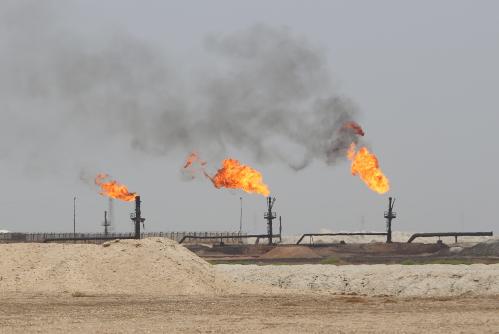
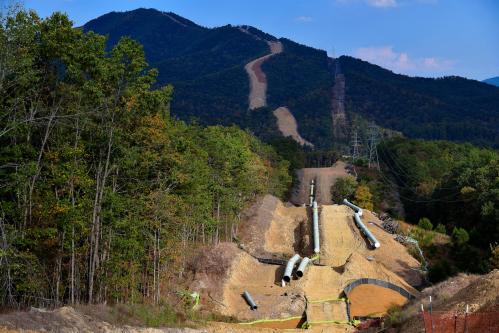
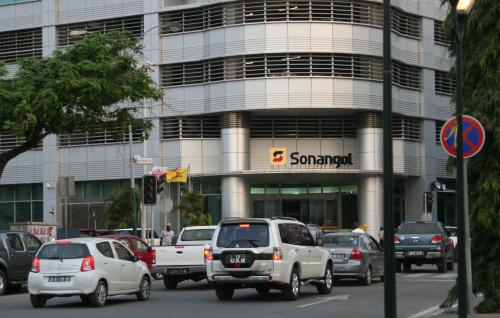


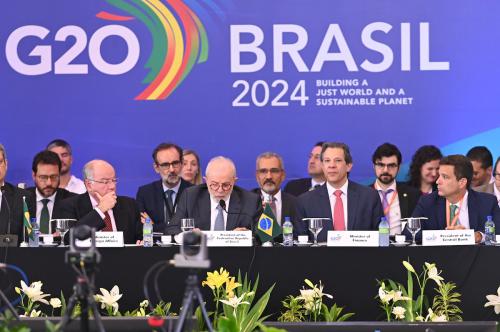
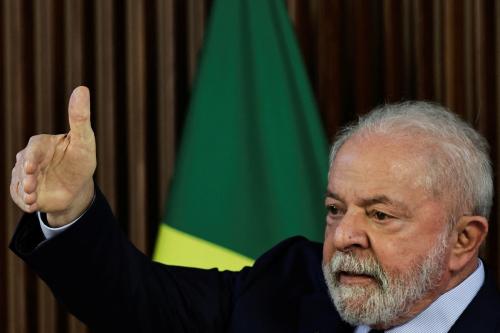

Commentary
Uncommon ground: The impact of natural resource corruption on indigenous peoples
August 7, 2020